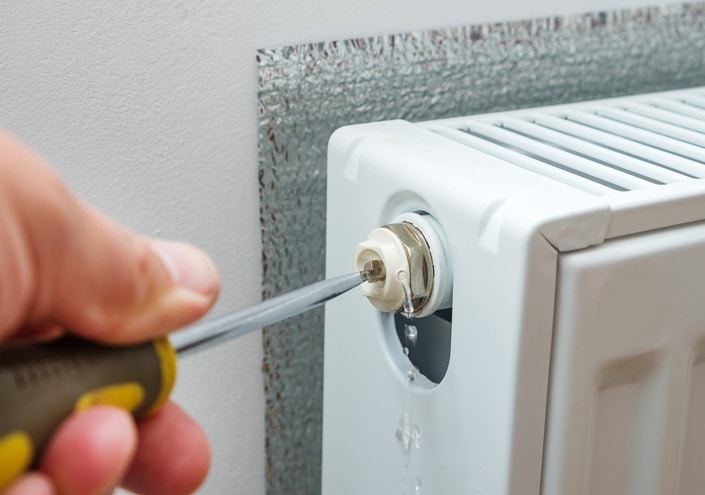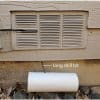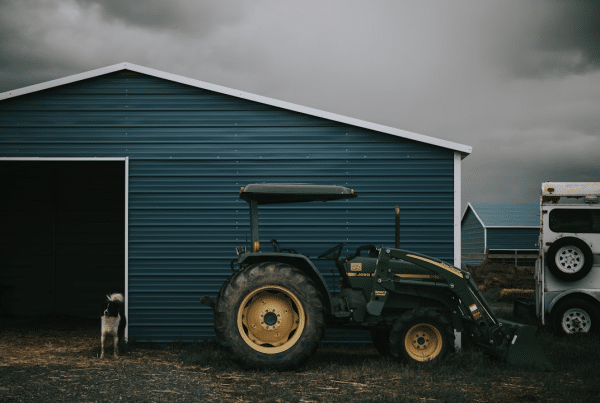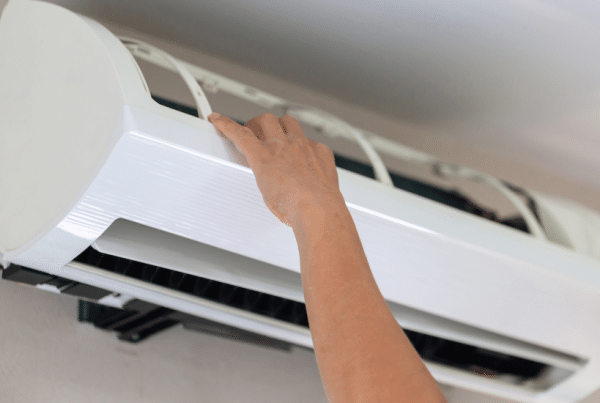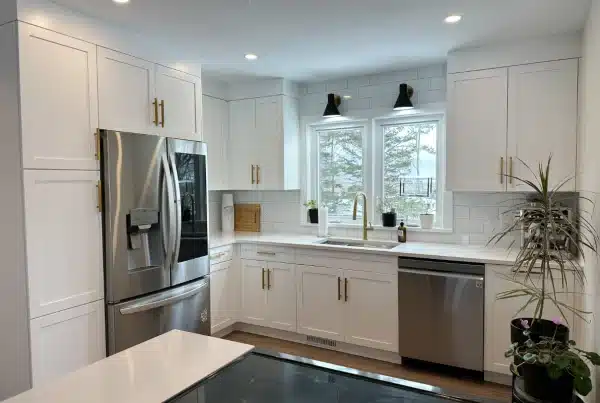What does bleeding a radiator mean? Bleeding refers to the process of eliminating trapped air inside the pipes of a radiator or boiler. The air trapped inside the system makes the radiator unable to convert water to heat, leading to cold areas.
Some issues include weird clucking noises. When this happens, it is time to bleed your radiator. Bleeding radiators can be confusing at times, but it’s actually very easy.
Read through this article to know the step-by-step guide to bleeding a boiler.
Why Should You Bleed Radiators?
Radiators need bleeding in order to function properly. The trapped air in the system causes the radiator to lose its ability to convert water to heat.
This would mean that your central heating system won’t work as efficiently and it would take longer to warm up the room. This would end up costing you more money, as your energy bills will go higher.
Low boiler pressure, cold patches, and other problems are usually a result of having a build-up of air inside your boiler’s radiators. It’s important to address these kinds of problems immediately by bleeding your radiators or consulting a professional. If this problem persists, and you’re running an old, outdated boiler, then it’s a must to call for professional help. You’ll either have to go through a series of repairs or get a new boiler entirely. If you’re looking to look for a replacement for your old boiler, you can choose to opt for boiler finance pay monthly to help reduce the burden on your finances.
How to Bleed Radiators in 7 Easy Steps
Bleeding radiators can be as easy as you may think. But before starting, you’ll need a radiator bleed key for opening the radiator and a cloth or towel to wipe off water drippings.
When it is ready, you can start by following these steps provided below:
Step 1. Turn it on.
Make sure to turn the heat on before starting to bleed your radiator. That way, the radiator warms up and builds pressure to evict bad air out.
Step 2. Check which radiator needs bleeding.
Inspect every radiator in your house to know which one needs the bleeding. When there are weird sounds or the radiator has some cold spots, that is a sign that the radiator needs bleeding.
Make sure you start at the lowest point in your house i.e. if you have a boiler in the loft, you do not want to start here and should start at the lowest point in your home.”
Step 3. Turn off the central heating.
Turn the central heating off to avoid burning yourself.
Step 4. Prepare towels around the radiator.
Water dripping may soil your carpet and floor. So to avoid this, use some towels that can absorb the water.
Step 5. Open the valve.
Use the radiator bleed key to open the radiator valve that looks like a round hole with a square inside. Turn the valve counterclockwise, and a hissing sound will come out. That indicates air escaping out of the pipes.
Step 6. Bleed the radiator.
Don’t open the valve fully because water will come out after all the air escapes from the pipes. It is good enough to turn it a quarter or half. When only water drips from the radiator, that means that the bleeding is finished. To close the valve, turn it clockwise. Repeat the same thing for the other radiators.
Step 7. Check the water pressure.
Check if the water pressure in your radiators is well. Bleeding causes water loss so make sure that the water is enough to make the radiator work properly. Remember that the radiator doesn’t produce heat without water. Therefore, always check it.
That’s really it! But if you want to know more information, you can ask experts for detailed explanations about bleeding radiators.
When Should You Bleed Your Radiators?
Radiators usually start to work less when air is trapped in the pipes. Because of this, your house might not be hot enough. The decrease in temperature output of the radiator tells you to start bleeding your heaters.
There are two common signs for when the time comes to bleed your radiator:
(1) when it makes strange noises; and
(2) when it doesn’t produce heat as much. You need to bleed your radiator when it starts making bubbling or ticking noises.
The noises came from the air trapped inside your radiator. These air bubbles usually oxidise pipes, which don’t bode well for you. Also, when the radiator doesn’t make your home hot enough, it means you have to check it and bleed it.
So when you observe these two factors, it is better to start bleeding your radiator to avoid getting cold inside the house.
You can bleed your radiator whenever needed since the air can enter the pipes at any given moment. However, it is good to start bleeding it before the time you’d need to use it, or presumably before winter.
Final thoughts
When it is time to bleed your radiator, you need to remember that you should never completely open the valve because water will come out. It is just enough to turn it half or quarter, and when only water drips from the radiator, bleeding is done.
When bleeding radiators, make sure not to bleed all of them at once since they will lose water after the air in the pipes has been removed. Always make sure that there’s enough pressure in your radiator before using it again. If you’re not sure how to do this or don’t have any experience doing things like this at all, then it would be best to ask someone who does, preferably a professional.

